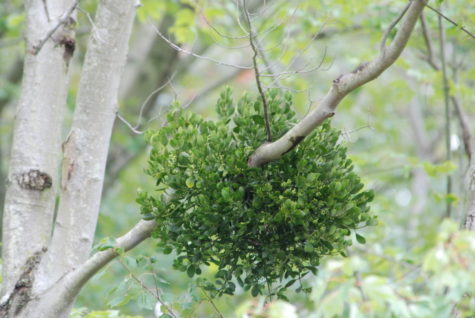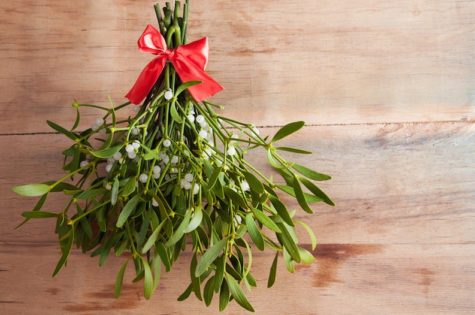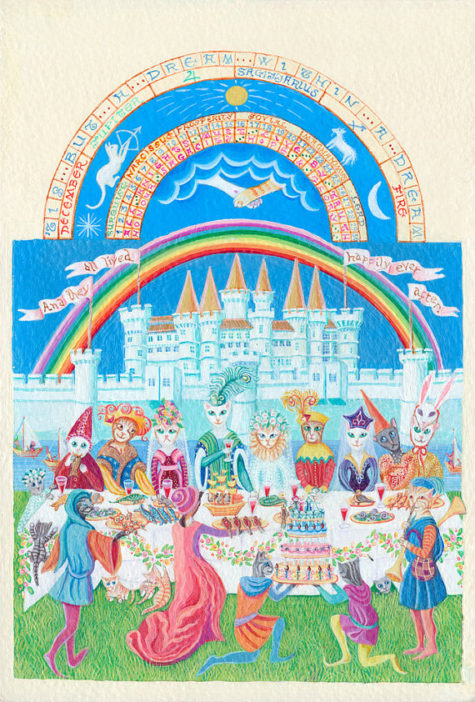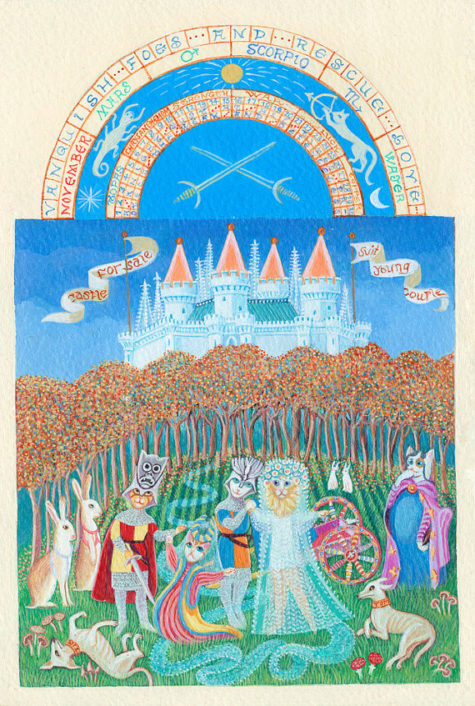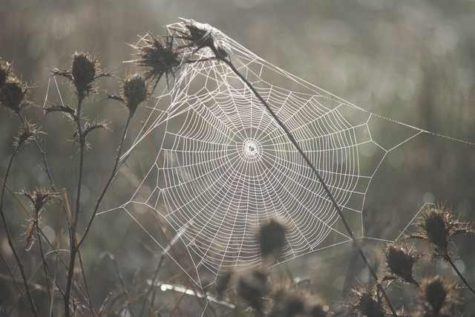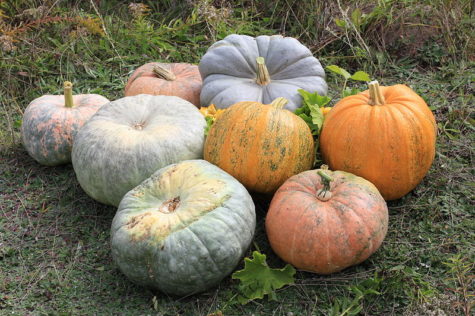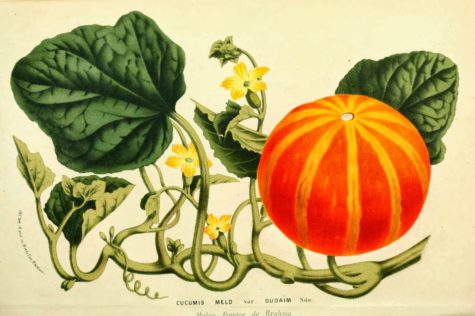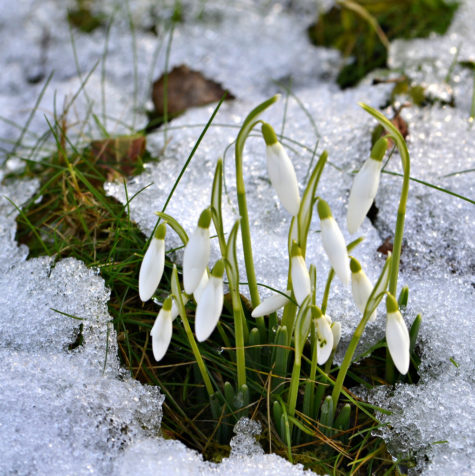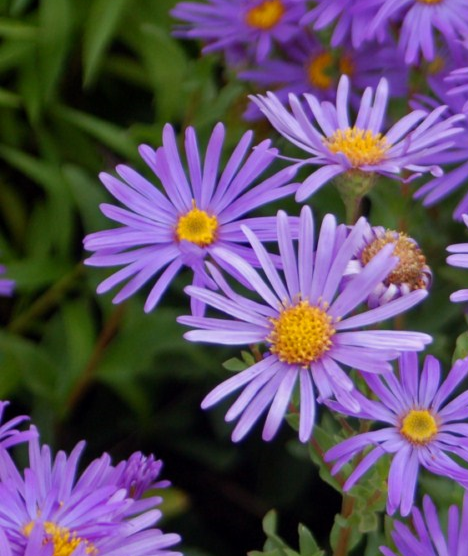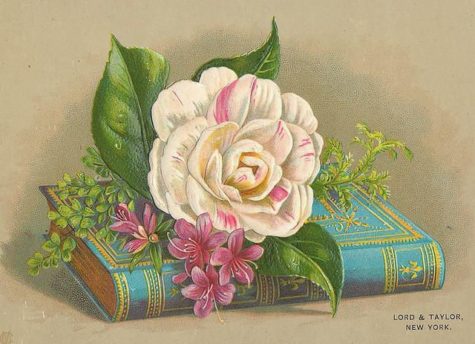Yearly Archives: 2016
- Ruler: Apollo, Druids, Venus
- Type: Herb
- Magickal Form: Berries, Leaves, Wood
- Use for: Fertility, protection, love, healing, luck, and invisibility
Mistletoe is another important plant that is used in many holiday traditions surrounding the winter solstice. Druids believed that anything found growing on an oak tree had been sent from heaven and mistletoe found on oaks was especially sacred.
Said to lose its power once it touches the ground, mistletoe is a holy herb and sacred to many deities. Mistletoe was perceived as being in a category all its own. Although it lives on trees, it’s not a tree. Although it’s like a plant, it doesn’t grow in either Earth or Water.
In the Celtic language, mistletoe means “All heal” and it was thought to possess miraculous healing powers and hold the soul of the host tree. Mistletoe would be hung over the entry into peoples’ homes and atop doorways within their homes as a token of good will and peace to all comers.
It is said that when warring Viking armies met under a tree in which mistletoe occurred that they would cease battle for the remainder of that day. Today, many people still hang mistletoe in their homes and couples kiss when they meet under the mistletoe.
In some traditions each time a couple kiss under the mistletoe a single white berry is removed and the kissing ceases when the final berry is removed. Kissing a lover under the mistletoe will make this relationship last. There is a myth associated with this practice that stated if any unmarried women of the household went unkissed during the hanging of the mistletoe, they would not marry in the coming year.
As a matter of fact, you can tie mistletoe with a red ribbon and hang it in your home any time of the year for luck, protection and extra kissing.
- Adding mistletoe to other love potions increases their power.
- Place the leaves or berries high on a mantel in the home to protect its occupants.
- Leave a sprig of mistletoe in the home of someone you want to be remembered by.
- Twist marjoram and thyme around mistletoe and hang it in the corners of each room to attract luck and good fortune.
- Carve a ring from mistletoe wood and wear it for protection and to ward off illness.
Mistletoe is believed to possess a magical affinity for seizure disorders. To prevent seizures, carry a piece of mistletoe in your pocket or within a conjure bag. Jewelry and charms carved from mistletoe wood can also be worn or carried. The most potent mistletoe seizure charm is a magic knife with an iron blade and a handle carved from mistletoe wood.
Mistletoe berries resemble tiny golden moons enhancing the lunar and fertility symbolism. According to Pliny, a piece of mistletoe carried as an amulet helps a woman conceive. Fertility charms are carved from mistletoe wood, and then carried or attached to a pin and worn as a brooch. The most powerful mistletoe jewelry is embellished with pearls.
Mistletoe allegedly enhances the reproductive capacity of animals. Not only does it promote conception, it’s believed to also prevent miscarriage, particularly for sheep and goats.
Hang mistletoe in the barn, or place it on around the animal in question. Be aware that the amuletic part of mistletoe is usually the “wood” – and again, be cautious as mistletoe can be toxic, especially the berries.
In Sweden mistletoe is known as “thunderbroom.” Place it over thresholds, and hang it from the wall to protect a home from lightning. You can wear mistletoe around your neck to promote invisibility and hang it on a baby’s cradle to prevent fairies from stealing the youngster.
CAUTION: The leaves and berries of mistletoe are poisonous. Use caution when handling and keep away from small children and pets.
Sources:
- Nature Spirits: Snow faeries, Storm faeries, Winter Tree Faeries
- Herbs: Holly, English Ivy, Fir, Mistletoe
- Colors: Blood Red, White and Black
- Flowers: Holly, Poinsettia, Christmas Cactus
- Scents: Violet, Patchouli, Rose Geranium, Frankincense, Myrrh, Lilac
- Stones: Serpentine, Jacinth, Peridot
- Trees: Pine, Fir, Holly
- Animals: Mouse, Deer, Horse, Bear
- Birds: Rook, Robin, Snowy Owl
- Deities: Hathor, Hecate, Neith, Athena, Minerva, Ixchel, Osiris, Norns, Fates
Power Flow:
To endure, die and be reborn. Earth tides turning. Darkness. Personal alchemy. Spiritual paths, Reach out to friends and family, the lonely and needy.
From: Moon Magic
Art by Jane Haworth
- Latin name: Ulmus Campestris; Slippery Elm – ulmus fulva.
- Celtic name: Negetal (pronounced: nyettle).
- Folk or Common names: Elven, English Elm, European Elm, and sometimes Piss-Elm (due to the smell it makes while being burned as a green wood).
- Type: Tree
- Ruler: Orpheus, Odin, Hoenin, Lodr, Woden
- Planet: Mercury, Saturn
- Element: Water
- Symbolism: Communication and Relationships
- Color: Turquoise
- Birds: Lapwing, Ruffled Grouse
- Parts Used: Bark, leaves, wood.
- Basic Powers: Stability, Elves, Protection, Speech, Female Power, Fairies
Elm is the Arbitrator that listens without judgment
Magickal usage:
Using Elm in spellwork adds stability to the spell. Elm is sometimes said to symbolize the dark side of the psyche and so can be used in psychic workings. The Elm is commonly known as “the elf friend”. If you desire to have contact with wood elves, pick a grove of Elm trees and sit under them and sing. Around about dawn, the elves will have gotten over their initial shyness and come out to join in the singing.
Elm trees are also thought to provide a channel for the communication with divas. To get an Elm tree to help you in this quest, offerings can be brought to a favorite tree and left. The best offerings are wine, mead, tobacco, coins and sage.
The wood of the elm was used for coffins in England, and you could find it in graveyards in ancient Greece. It was found in the underworld and at the crossroads leading to the faery world. The tree essence energizes the mind and balances the heart. It attracts love, protects, and aids in sharpening psychic powers.
Tiny twigs of Elm can be worn in a bag around a child’s neck as a charm to produce eloquent speech in later life. Elm wood may be bound with a yellow cord and burned to prevent gossip. The Elm represents primordial female powers and therefore the Elm is a tree with great protective qualities. The wood from the Elm can be made into talismans and charms that can be worn for protection. The Elm also has the qualities of regeneration, boldness and fidelity, and so added to its protective qualities, it is excellent when given as a good luck token to departing friends.
Slippery Elm Bark is used in herbal medicine as a soothing demulcent; its reputation in Conjure work and Hoodoo is similar: it is said to make the bearer impervious to the slander, libel, malicious gossip, and lies spread by back-biting family members, jealous co-workers, and false friends who are trying to trouble your marriage or love-life.
Some folks place a small pinch of Slippery Elm in the corners of their rooms; they claim that this protects the home and rids the premises of evil. Others carry Slippery Elm in a pocket or conjure bag for immunity from the harmful tales told on them by covetous neighbors, back-biters, and hidden enemies posing as friends.
“Because of its rich foliage and sap, the Elm is sacred to Saturn, Roman god of agriculture. Representing fertility, it foretells that your wish will meet with success. Its other meaning is their need to give way and let nature run its course, to sacrifice what you have for what could be.
Elm wood is flexible and durable, and does not rot when wet. You probably know in your heart that your wish will be granted. A hopeful sign is that Elm twigs are used as divining rods. The Elm tree stands at the entrance to the underworld as a living connection between the living and the dead. What comes to you is blessed by heaven. It may be that all you need do is wait and have faith in nature.”
~Tree Magick by Gillian Kemp
More magickal uses:
- Carry a consecrated elm wand to see elves and fairies. It is best to choose a fallen branch but if you prune one, make sure the tree is not damaged and leave some coins as an offering under the tree.
- The branches are said to protect against lightning.
- Burn the leaves or bark to increase psychic vision and intuition.
- Carry Elm to attract love.
Herbal usage:
The Elm has many medicinal uses. In the past, Slippery Elm bark can was powdered and made into a milk for babies that couldn’t tolerate cow’s milk. In fact slippery Elm bark is good for many purposes. In tea it can ease insomnia and sooth an upset tummy. It is also useful for enemas and makes good poultice material. This type of poultice can be used on wounds, infections, ulcers, burns, and poison ivy.
More information on the medicinal and magickal uses of Slippery Elm can be found here:
- Encyclopedia of Herbology – Slippery Elm
- Folk Medicine Remedies and Cures – Slippery Elm
- Magickal Apothecary – Slippery Elm
- Nature Spirits: Subterranean faeries
- Herbs: Grains of Paradise, Verbena, Betony, Borage, Cinquefoil, Blessed Thistle
- Colors: Gray, Sea-Green
- Flowers: Blooming Cacti, Chrysanthemum
- Scents: Cedar, Cherry Blossoms, Hyacinth, Narcissus, Peppermint, Lemon
- Stones: Topaz, Hyacinth, Lapis Lazuli
- Trees: Alder, Cypress
- Animals: Unicorn, Scorpion, Crocodile, Jackal
- Birds: Owl, Goose, Sparrow
- Deities: Kali, Black Isis, Nicnevin, Hecate, Bast, Osiris, Sarasvati, Lakshmi, Skadi, Mawu
Power Flow:
Take root, prepare. Transformation. Strengthen communication with the God or Goddess who seems closest to you.
From: Moon Magic
Art by Jane Haworth
Picture a traditional Witch’s cottage and the chances are that you will imagine cobwebs. Now this could be because the folklore image of the Witch is as a poor old woman, possibly no longer able to clean her home.
But I like to think it may have something to do with the uses of cobwebs, for not only are they brilliant works of art and nature’s highly efficient fly traps, they have been used in healing and in healing magic.
Even when I was a child it was common to be told to place a clean (i.e. not dusty) cobweb over a cut or bleeding wound to help stop the bleeding, and if the wound is not too deep it will work.
It used to be said that, for every cobweb you see on walking, you will receive a kiss that day. But if you find one across your door, it indicates that your love is with another.
Cobwebs in the kitchen are said to indicate a house without kisses. If you can collect a cobweb with dew on it, without breaking it, place it on a dish of water to attract love into your life.
Cobwebs are frequently used in spells to promote communication, perhaps after a disagreement. Name two objects after the “warring” parties and wrap them in a cobweb. Place in the light of the Sun for seven days.
Note that it is unlucky to kill a spider or to disturb it on its web, but it is permitted to remove old, or unoccupied, webs.
From: The Real Witches Year
- Scientific Name: Cucurbita
- Folk Name: Pumpkin, Winter Squash
- Type: Food
- Ruler: Oshun, Hekate
- Element: Water
- Parts Commonly Used: Seeds, Flesh, Whole Fruit
- Basic Powers – the fruit: Protection, Divination, Banishing, and Prosperity
- Basic Powers – the seeds: Fertility, Abundance, Wealth, Love, Prosperity, Good Luck
Basic Info:
Pumpkins can be used for protection, divination, banishing, and prosperity. Pumpkins and pumpkin seeds represent fertility, abundance, wealth, love, prosperity, good luck, and can attract money. They can also be used for healing, honoring the Moon, and Divination/Contacting the Spirit World.
Pumpkins have a long history of being the one vegetable that can ward off evil spirits on Halloween night. The tradition of carving pumpkins with faces, comes from Celtic traditions where turnips and other bulbous vegetables where cared to keep away evil or mischievous spirits during Samhain. To the Celts the head was the most sacred and important part of the body. So creating faces and turning them into lanterns made perfect sense.
Another legend tells us that we carve and light pumpkins so that our ancestors can find us and can communicate with us. At Samhain, the veils between the realm of the living and the dead are at their thinnest, and those who have passed on can cross over into our world, albeit for a short time.
Pumpkins are often symbols of the fruitfulness of the earth at this autumn time of year since their round orange bodies also represent the abundance of the Mother Goddess or Mother Earth. Pumpkin seeds, when roasted, dried and eaten, are believed to keep extra pounds away while adding the fruit of the pumpkin itself to delicious delights such as pumpkin bread or pumpkin pie is said to bring money and luck your way as well.
This fruit is also sacred to the Yoruban goddess Oshun and is offered to her in exchange for wishes granted concerning love, money and fertility. Offer whole pumpkins smeared with honey to the river where you wish to conceive a child. Offer whole pumpkins with names carved into them for love spells. Throw a handful of pumpkin seeds into the river and ask for a financial boon. It is important to know that the pumpkin and its seeds are considered the children of Oshun. If you are working with her magick, you must abstain from eating any pumpkin.
Other magickal uses for pumpkins include:
- When doing tarot readings for others, place a small pumpkin near your cards so you can draw upon it’s energies to reveal the unknown.
- Place a pumpkin on your altar and/or light a pumpkin-scented candle when doing any magic that involves discovering and developing your magical skills.
- For protection, carving ghoulish faces into pumpkins and placing them at your doorstep is said to help protect your home from wandering, harmful spirits this time of year.
- Light pumpkin-scented candles near your divination or scrying tools to increase the potency of your readings. Alternatively, keeping a pumpkin in your divination space is said to provide extra insight in your reading.
- Place pumpkin scented sachets around your home to drive away harmful energy and make your home warm and inviting.
- Pumpkins as a symbol of prosperity and can be placed on the altar, hearth, and doorstep to bring prosperity into the home and to those who live in it.
- Some believe the energy from Pumpkin scented candles helps to increase the power of spells.
These are just a few ways to use pumpkins in your magical practice. Remember, pumpkins are linked to the mysterious, the unknown, the dark, and all kinds of magic, so use them often!
A note of warning:
Some say that early American legend maintained that leaving a half of a pumpkin open or exposed in any room, but especially the kitchen, would attract negative energies into your living space. Pumpkins that have begun to spoil were believed by the Romany to suck the life energy from the people around them, and create illness and bad luck.
Related Content:
- Blends and Recipes – Magickal Apothecary/Pumpkin
- Spells and Magick – Book of Shadows/Pumpkin
- Folklore – Gypsy Magick/Pumpkin
Information in this post was collected from a variety of sources.
- Scientific Name: Galianthus nivalis
- Common Names: Fair Maid of February; Bulbous Violet; Emblem of Early Spring; Maids of February; Candlemas Bells; Mary’s Tapers; Moly
- Type: Flower
- Parts Commonly Used: The flower
- Basic Powers: Hope, Friendship in adversity, Passing of sorrow,
Snowdrops are often assigned to the month of January, and I’m not sure why because these little flowers are also known as “Candlemas Bells”. February 2nd is Candlemas (Festival Day of Candles), and Imbolc. The ancient festival marks the midpoint of winter and some recognize it as the last day of the forty day Christmas season. In the catholic tradition, candles were brought into the church and blessed as a symbol of hope and light. In a time of no electric lights, candlelight offered great protection and comfort during the dark days of winter.
By producing their own heat, snowdrops actually melt the snow in their surroundings. Like candles, Snowdrops offer us our own light of hope in the grey of winter days. They are the emblems of friendship in adversity, harbingers of spring.
The first sight of snowdrops growing wild represents the passing of sorrow. In various religions, they are a sign from the gods that good times will come once more. According to one Christian tale, an angel turned falling snowflakes into flowers to give Adam and Eve a sign of hope after evicting them from the Garden of Eden.
The fact that snowdrops are often found, in abundance, in the old convent gardens, it was believed that this little white flower was sacred to virgins. For this reason, it was dedicated to the Virgin Mary. In some places, during the Candlemas celebration, it was customary for young women, wearing white gowns, to walk in procession carrying snowdrops in their hands.
It was often said that any one wearing a snowdrop would have only pure and lofty thoughts; and that if a young girl ate the first snowdrop she found in spring, neither sun nor wind would tan her that summer.
The snowdrop flower – which is well loved not only for its simple beauty, but for its distinct, honey-like scent – has a surprisingly varied history in both ancient folklore and more modern storytelling. In Grimm brother’s original version of the fairy tale nowadays known as Snow White, the main character’s name was actually Snow Drop.
Every spring on March 1, the national Moldovan holiday, is celebrated. On this day people present each other with the traditional flowers. One of the old Moldovan legend says that once in a fight with the winter witch, that didn’t want to give up its place, the beautiful lady Spring cut her finger and few drops of her blood fell on the snow, which melted. Soon on this place grew a snowdrop and in such a way the spring won the winter.
However, in some folklore, snowdrops are seen as unlucky. The reason for this is perhaps that they often grow in cemeteries and churchyards. Along with other white flowers, superstition says it is courting disaster to bring snowdrops into the house. To do so is to invite death into the home, can mean the parting of a loved one and, in the west country, is thought to cause eggs to turn addled. One should never even pick wild snowdrops, especially from a graveyard. The sight of a single snowdrop blooming in the garden foretells of impending disaster.
According to Are You Superstitious, by Lore Cowan, it is particularly unlucky to bring snowdrops, or “Candlemas bells”, into the house on February 2nd, which is Candlemas, or Imbolc, and if you wish to be married within the year you should not bring them into the house on Valentine’s Day, 14th February.
Snowdrops have their use in medicine. The alkaloid Galantamine, which was first isolated from snowdrops, has been used to treat Alzheimer’s disease, neuritis and neuralgia. In parts of eastern Europe, rubbing snowdrops on the forehead was at one time a folk remedy used as pain relief.
Andreas Plaitakis and Roger Duvoisin in 1983 suggested that the mysterious magical herb moly that appears in Homer’s Odyssey is actually snowdrop. An active substance in snowdrop is called galantamine, which, as an acetylcholinesterase inhibitor, could have acted as an antidote to Circe’s poisons.
Note: This post was compiled by Shirley Twofeathers for Magical Ingredients, you may repost and share without karmic repercussions, but only if you give me credit and a link back to this website. Blessed be.
- Scientific Name: Asteraceae
- Folk Name: Michaelmas Daisies, Frost Flowers, Starworts
- Type: Flower
- Ruler: Venus
- Parts Commonly Used: Blossoms, Leaves (rarely)
- Basic Powers: Loving vibrations, Healthy emotions, Contentment, Protection
Also known as starworts, Michaelmas daisies or Frost flowers, the name aster is derived from the Greek word for “star,” This is largely due to the shape of the flower’s head; however, it is also because they grow in a spotted abundance and have an appearance similar to that of the stars in the sky.
With their wildflower beauty and lush texture, asters have long been considered an enchanted flower. The Greeks and Romans believed this flower was sacred to the gods and so wreaths of asters were placed on their altars.
In mythology, asters were said to have grown from the tears of the goddess Asterea. This ancient myth arises from the Iron Age, when people learned to make weapons of iron, the god Jupiter, was angered by all the fighting with these iron weapons that he decided to destroy the entire race by a flood. The gods fled the earth and the last to go, the goddess Astraea, was so saddened that she asked to be turned into a star. When the flood waters receded, all that was left was mud and slime. Astraea felt so sorry for them she wept, her tears falling as stardust which turned to lovely starflowers or asters. while she wept for the lack of stars on earth.
Roman mythological legend holds that one of the dryads presiding over the forest, meadows and pastures, the nymph Belides, was responsible for the origin of this flower. While dancing on the turf at the edge of the forest with the other nymphs, Belides attracted the admiration of the deity who presided over the orchards whose name was Vertumnus. She transformed herself into the flower bellis, it’s botanical name, to escape the pursuit of Vertumnus. The bellis flower is derived from the Anglo-Saxon “daeges eage” (day’s eye) from the habit of this flower to close its petals at night and on dark rainy days.
Another legend has it that the fields bloomed with asters when Virgo scattered stardust on the earth.
Asters are ancient wildflowers of the daisy family, and attract butterflies to your yard. There are over 600 species of aster, the most popular being the Monte Casino. These star-like flowers can be found in a rainbow of colors – white, red, pink, purple, lavender and blue, with mostly yellow centers.
Asters are sacred to Venus. Incorporate asters into spells and charms to enhance loving vibrations and healthy emotions. Adding these beautiful flowers to your garden brings love and contentment to your entire household.
Historically, aster flowers have had many uses. One of the best known is their use when placed upon the graves of French soldiers; these flowers were meant to symbolize afterthought, the wish that things had turned out differently, and to represent a desire for the reversal of the outcome of their battles. In China, they signify fidelity.
Known as “Eye of Christ” in France and “Starwort” in England and Germany, asters were thought to carry magical powers. The early English name, Starwort, was later changed to Michaelmas Daisy, as it blooms around St. Michaelmas Day in September.
In ancient Greece, aster leaves were burned, as it was thought that the smokey perfume would keep ward off wicked spirits and drive away serpents.
Asters may also be used for their strong medicinal properties. Some varieties of this flower are said to help with migraines, general headaches and colds, while others can aid in treating the pain of sciatica and muscle spasms. Virgil wrote that the flavor of honey would be improved if asters were boiled in wine and placed near a beehive.
In addition to having a wide array of colors to choose from, the aster flower also has a good deal of meaning to go alongside its good looks. In general, the aster is considered a symbol of patience, daintiness, and a love of variety. Others state that this flower is an emblem for refinement and elegance.
As a gift, asters placed in a bouquet with complementing flowers can be representative of love and admiration. They are often given to those born in September, or those celebrating a 20th wedding anniversary. As a more unique gift, you might present a single fresh or dried flower to a lover or friend as a love charm, as asters were thought by some ancient Greeks to hold the mystic power of drawing forth affection.
Found at: Flower Info and Meanings and Legends of Flowers
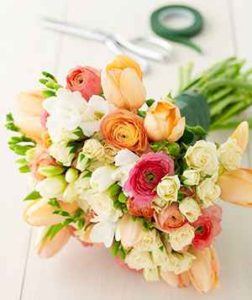 Flowers may be combined and arranged so as to express even the subtlest shades of sentiment. Here are some examples of how to use the language of flowers to send a message:
Flowers may be combined and arranged so as to express even the subtlest shades of sentiment. Here are some examples of how to use the language of flowers to send a message:
- Moss Rosebud and Myrtle – A confession of love
- Mignonette and Coloured Daisy – Your qualities surpass your charms of beauty
- Lily of the Valley and Ferns – Your unconscious sweetness has fascinated me
- Yellow Rose, Broken Straw and Ivy – Your jealousy has broken our friendship
- Scarlet Geranium, Passion Flower, Purple Hyacinth, and Arbor Vitae – I trust you will find consolation, through faith, in your sorrow; be assured of my unchanging friendship.
- Columbine, Day Lily, Broken Straw, Witch Hazel and Coloured Daisy – Your folly and flirtatiousness have broken the spell of your beauty.
- White Pink, Canary Grass and Laurel – Your talent and perseverance will win you glory.
- Golden-rod, Monkshead, Sweet Pea, and Forget-me-not – Be cautious; danger is near; I depart soon; forget me not.
The language of flowers, sometimes called florigraphy, was a Victorian-era means of communication in which various flowers and floral arrangements were used to send coded messages, allowing individuals to express feelings which otherwise could not be spoken. This language was most commonly communicated through Tussie-Mussies, an art which has a following today.
The nuances of the language are now mostly forgotten, but red roses still imply passionate, romantic love and pink roses a lesser affection; white roses suggest virtue and chastity and yellow roses still stand for friendship or devotion. Also commonly known meanings are sunflowers, which can indicate either haughtiness or respect – they were the favorite flower of St. Julie Billiart for this reason. Gerbera (daisy) means innocence or purity. The iris, being named for the messenger of the gods in Greek mythology, still represents the sending of a message. A pansy signifies thought, a daffodil regard, and a strand of ivy fidelity.
You might also enjoy the Dictionary of the Language of Flowers, a list organized by the flower meanings rather than the flower names. If you are interested in combinations of flowers, you might want to read this post on Combining Flowers for Specific Intentions.
These language correspondences can be used when creating a spell, planting a magickal garden, to set an intention, or to send a message. You may notice some of the flowers (and plants) have meanings that seem incongruent or inconsistent. This is because language tends to change over time. Also, you may find that magickal correspondences to some of these flowers are in direct conflict – that is because the meanings were not derived from magickal sources. When in doubt, go with the meaning that resonates with your personal experience, and be clear with your intention. Pictures may be substituted for the actual flower or plant.
Here’s the list:
A
- Acacia – Secret love
- Acanthus – Art
- Aconite – Misanthropy
- Acorn – Nordic Symbol of Life and immortality
- African Marigold – Vulgar minds.
- Agrimony – Thankfulness
- Allspice – Compassion
- Aloe – Grief
- Almond (Common) – Stupidity. Indiscretion.
- Almond (Flowering) Hope – Promise, Hope,
- Almond (Tree) – Giddiness; heedlessness Stupidity, thoughtlessness
- Alyssum (Sweet) – Worth beyond beauty.
- Amaranth (Globe) – Immortal love
- Amaryllis – Pride; Pastoral Poetry
- Ambrosia – Your Love is Reciprocated
- Anemone – Forsaken, sickness, unfading love
- Apple Blossom – Preference, Fame speaks him great and good.
- Apple (Thorn) – Deceitful charms.
- Apricot Flower – Doubt, distrust
- Arborvitae – Everlasting friendship
- Arbutus – You’re the only one I love
- Arum – Ardor
- Asparagus – Fascination
- Aspen Tree – Sighing, Lamentation
- Asphodel – My regrets follow you to the grave
- Aster – Symbol of love, daintiness, talisman of love
- Aster (China) – Fidelity, variety, I will think of you
- Autumn Leaves – Melancholy
- Azalea – Take Care, temperance, fragile, passion, Chinese symbols of womanhood
